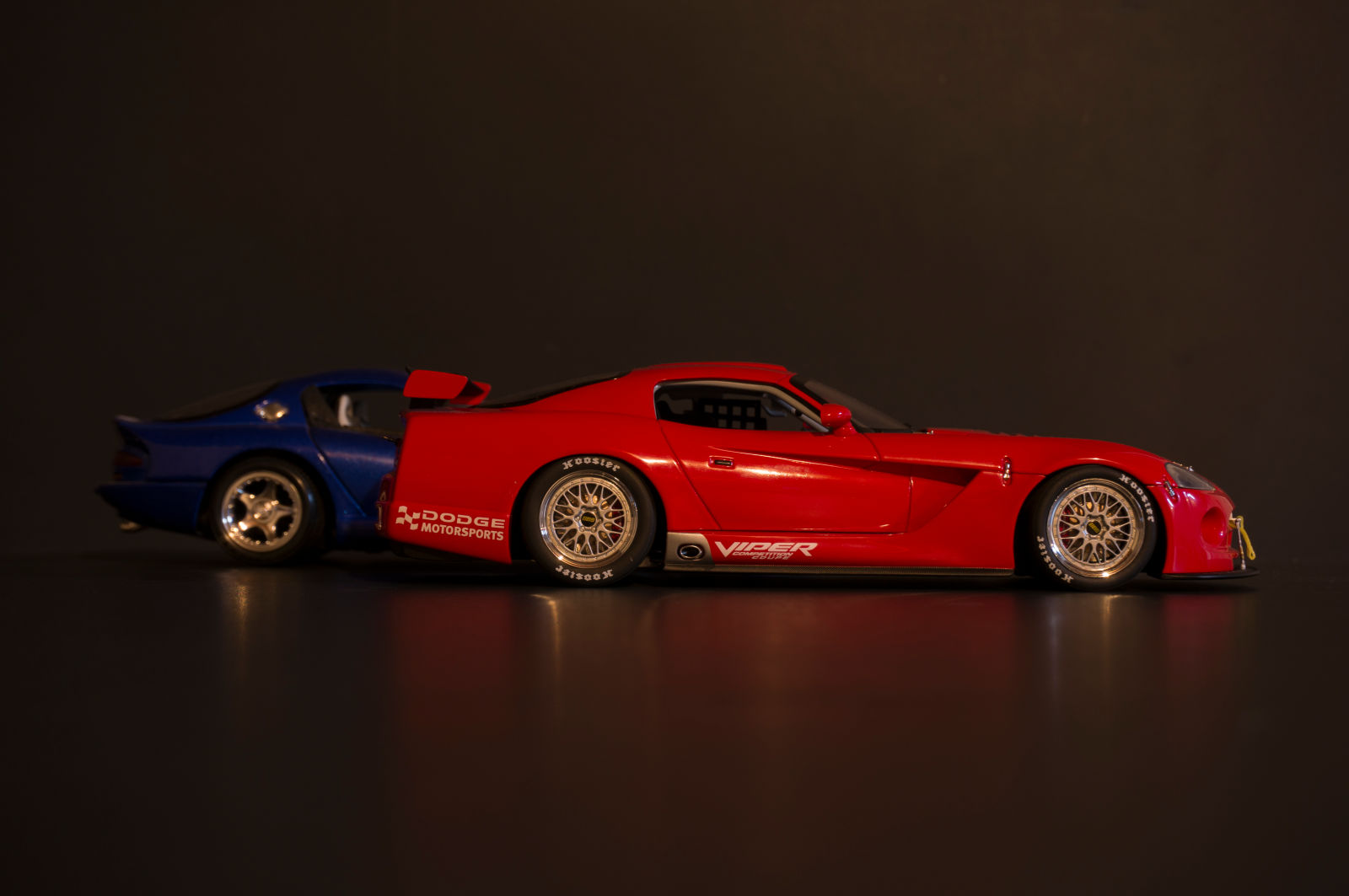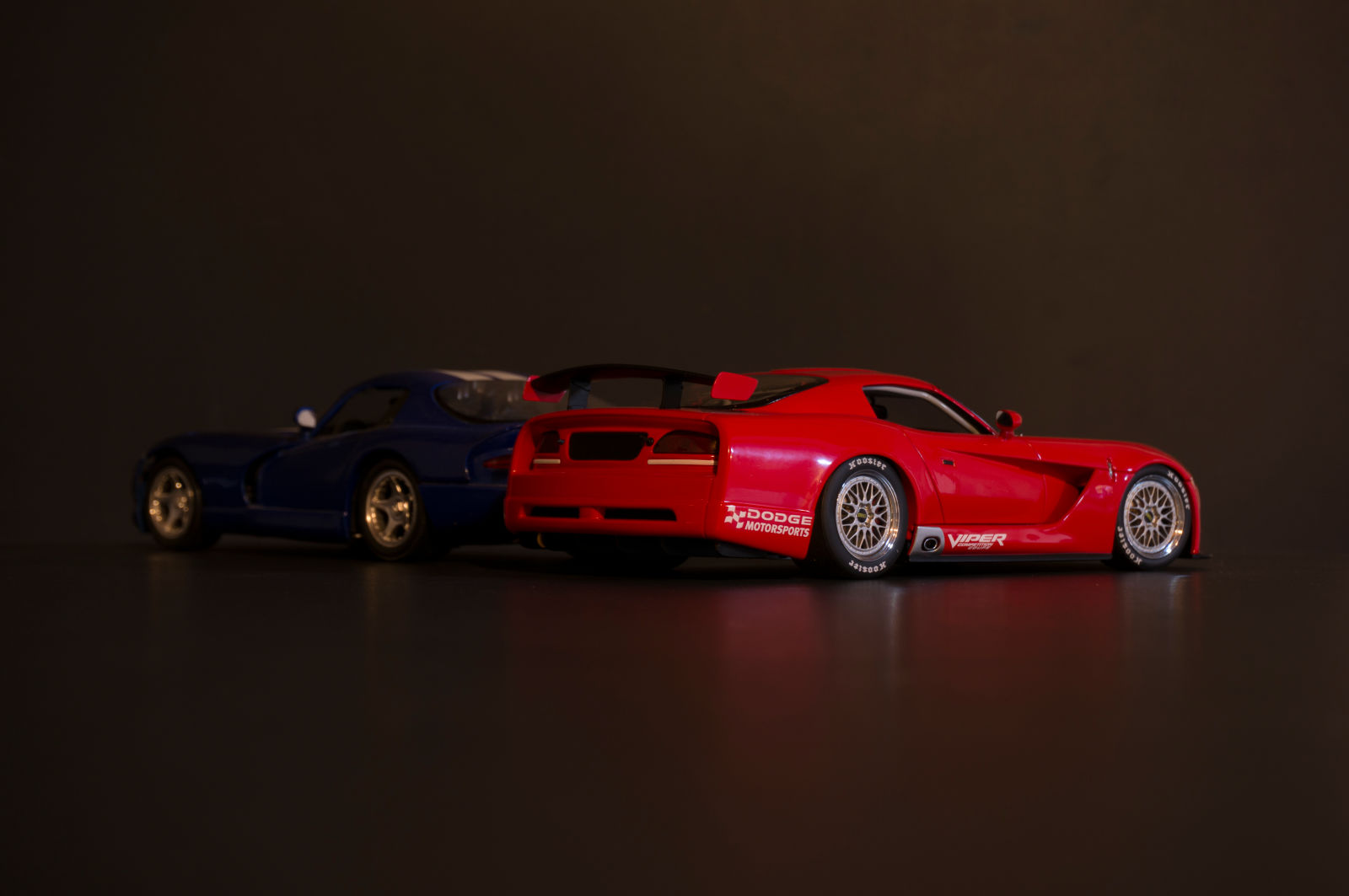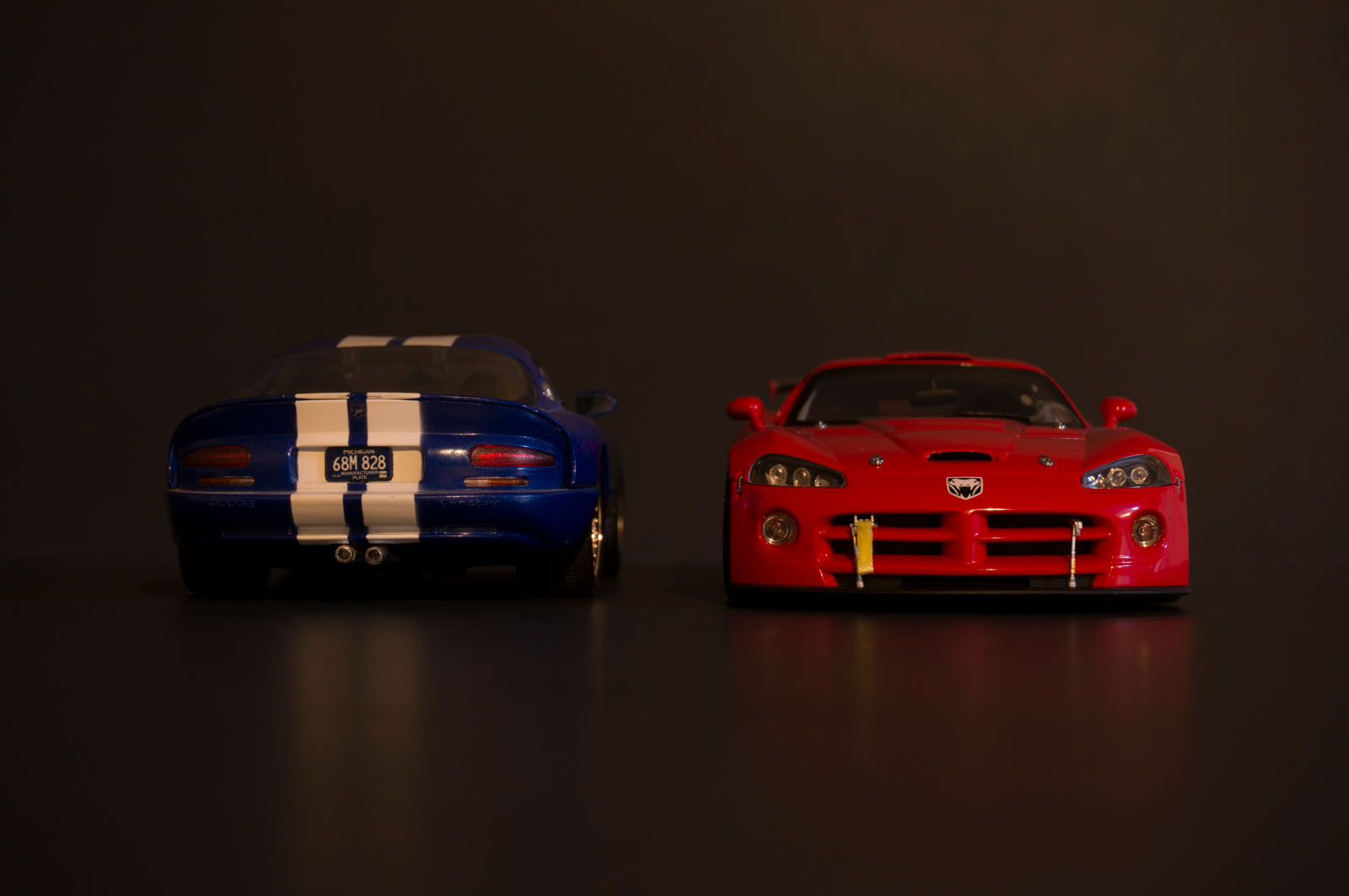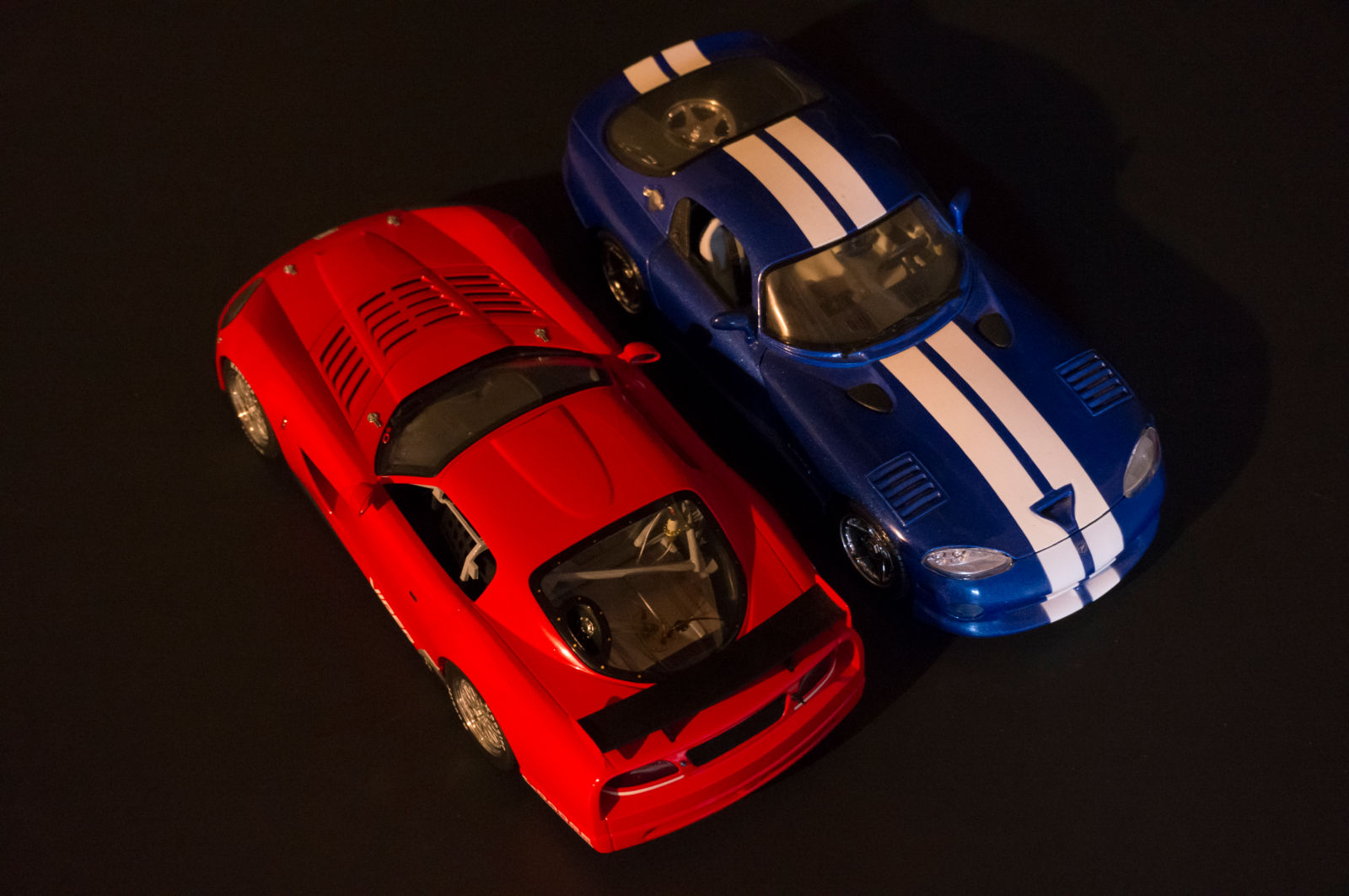Continuing the theme of pairing different generations of cars in my 1:18 collection, second up is the AUTOart Viper Competition Coupe. A V-10 powered GT bruiser built for customer racers.

1:1 History
Coming off of the dominance of the first generation Viper GTS-R factory racer of the late 90’s (which had won multiple FIA & ALMS championships, its class several times at Le Mans, and an overall victory at the 24 Hours of Daytona) Dodge set about building a second generation racer. Seeing the success (and profits) of Porsche’s ubiquitous 911 GT3 Cup and RSR customer cars, Dodge decided to build a turn-key customer race car for themselves.
Dodge Motorsports had practical aspirations for the Comp Coupe. It needed to be a safe durable and, of course, the car would have to have performance advantages to be competitive in selected racing series. Last but not least, it would have to be an affordable, working-class club racer.

The Dodge Viper Comp Coupe accomplished these objectives and then some. With an FIA approved roll cage, fire suppression system, fuel cell, and race seat, the Comp Coupe was fully stocked with racing safety equipment. In addition, the V-10 engine that powers the Coupe was proven to be a reliable and durable racing workhorse. That iconic 8.3 Liter (505 cubic inches) V-10 is really the heart of the car, and made around 520 horsepower and 540 lb.-ft of torque.
As for performance, Comp Coupe estimates put 0-60 mph acceleration times at 3.8 seconds; 0-100 mph in 9.2 seconds; 1/4-mile in 11.8 seconds at 123 mph; a top speed of 192 mph; 60-0 braking in 90 feet, and lateral acceleration of over 1.25g.
To make it affordable to even weekend warriors, the Competition Coupe utilized a combination of high-volume production parts and “state-of-the-art” race car equipment. Delivering a lot of performance at an affordable price of around $129,000, which was significantly cheaper than a 911 GT3 Cup of the same era.

The car made an outstanding debut in 2003 when Paul Mumford, an amateur driver, beat the factory Audi and BMW teams and their professional drivers at Mazda Raceway Laguna Seca winning in only his second SCCA World Challenge race.
In 2004, the SCCA ordered that the Vipers bear an additional weight penalty of 100 pounds. This weight penalty did little to slow the Comp Coupes though, as they would go on to dominate that year with Tommy Archer taking the SCCA World Challenge Speed GT class championship.
The car soldiered on competitively, winning races every year until its replacement in 2012 by the current GTS-R. Although it may have never reached the global success or sales of the 911 GT3, it definitely made its mark on American GT racing.

The Model:
This Viper Competition Coupe is the plain body version of the car. This is what a customer car would look like before they applied their own livery to it. This AUTOart model is a sealed shell with no opening features, but it still has quite a bit of detail.
Starting at the nose there’s a really nice splitter with support rods running back into the grille. I’m not gonna lie, that tiny yellow tow strap in the grille may be my favorite part of the model. It’s probably because it’s the only other color apart from red on the model. The fog lights are set deceptively far back in recesses in the nose adding some nice depth to the front of the car.

The hood of the model gets some nice details too, with hood pins and tons of louvered vents. AUTOart does its usual magic making convincing replicas of the BBS multi-piece wheels; Hoosier slicks (track day BRO); and brakes with Viper printed on the red calipers.
The interior is incredibly spartan, the seat and belts are well rendered but there’s not much more in the cockpit. Under the back glass, however, is a different story. The fuel filler and lines are really nicely represented, and the roll cage looks fairly convincing.

Final thoughts:
As I said in yesterday’s post, I’m biased towards American GT cars. It’s not nearly as detailed as the C5-R, but what it lacks in subtlety it makes up for in flair. The Viper is big and loud (seriously the model is hilariously wide) and draws more attention to itself than the Corvette does. But isn’t that just the nature and draw of the Viper? A brutal, unrefined, homage to the 427 Cobras of the 60’s that doesn’t care about anything other than going faster.
When viewed through that lens I think the model is successful. (Although I would like to see AUTOart’s take on the V-10 race motor)
Thanks for reading!